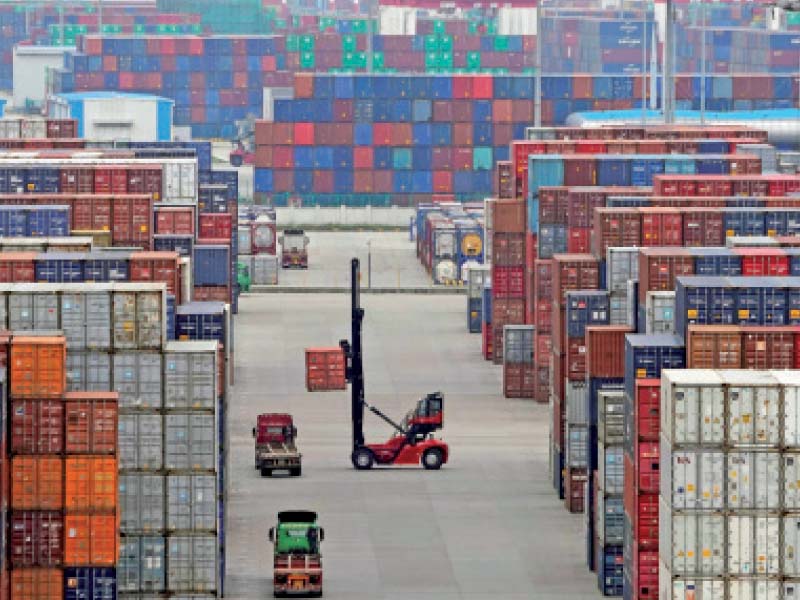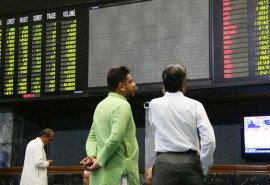
Higher export prices offset lower demand
Future exports depend on how pandemic impacts global demand
LAHORE:
Pakistan's exporting firms did not report a significant change in the value of their export goods despite Covid-19 as decrease in demand was largely neutralised by higher prices for some of the goods.
Exporters were satisfied with the steps taken by the government, however, there were a few concerns and one of them was currency depreciation.
The future of exports is not only dependent on how the pandemic impacts Pakistan but also on how it affects the export destinations as falling global demand has the potential to hurt future exports from Pakistan, according to a survey conducted by the Lahore School of Economics.
The survey was conducted in June this year, which covered first three months of the pandemic ie March-May 2020. The sample size for the survey was 130 companies of Lahore, Karachi, Sialkot and Faisalabad from textile, sports goods and surgical instrument sectors.
According to the survey, 58% of the exporting firms reported no change in the export value of their goods in the reported months.
However, export volumes fell drastically because of the pandemic as 75% of the firms reported a drop in their export volumes.
The relative stability in export values, with falling export volumes, was the result of an increase in average prices with 26% of the firms reporting an increase in the average price per unit of their exported goods during the pandemic.
Almost two-thirds of the medium-sized firms and about half of both small and large companies reported that their export values did not change during the three months under review. At the same time, some of the firms reported a decrease in export values. Almost 14% of small firms, 11% of medium-sized firms and 16% of large firms reported a decrease in export values.
Some firms were able to take advantage of changes in demand and increase in the value of their export goods. About 8% of the small firms, 22% of medium-sized firms and 29% of large firms recorded an increase in export values from March-May 2020.
While a significant number of firms reported that their export values stayed relatively constant, there were still significant changes in export volumes.
In particular, 82% of medium-sized firms reported that their export volumes fell while 74% small and large firms reported a decline in their export volumes. However, some firms were forced to stop exporting over the three months. That was a problem for the small exporters as around 30% of small exporting firms were forced to stop export activity altogether.
The survey showed that these seemingly conflicting narratives made sense because average prices of export goods rose while export volumes fell, which led to a relatively constant total export value.
The survey found that the average price per unit of exported products rose for small, medium and large-sized firms by 25%, 30% and 22.5% respectively.
Across sectors, most firms reported stagnant export values. Some of the firms from all the three sectors that reported an increase in their export values were surgical goods producers, who reported the greatest increase in export values. Almost 37% of surgical instrument producers reported an increase in export values. The surgical goods sector noted the greatest fall in export volumes but the decline was neutralised by an increase in the average unit price. Some 53% of surgical goods exporters reported an increase in the average price per unit.
Meanwhile, sports goods manufacturers and textile manufacturers reported average unit price increase of 37.5% and 22.2% respectively. At the same time, about 7% of textile exporters reported that they were forced to shut down.
The survey added that the exporters trading in the UK particularly experienced a significant fall in export values - with 27% of firms reporting a decrease - while almost 9% of the exporters trading in the US reported a decline in export values.
Furthermore, almost 11% of the firms exporting to the US reported that they stopped exporting during the pandemic.
Exporters trading in Asia reported the most significant rise in average price per unit - with almost 50% of exporters reporting an increase - while 45% of exporters to the UK reported higher prices.
Export values for Pakistani exporters to the UK fell despite higher unit prices because export volumes to the UK fell more than the increase in average prices of exported goods.
The survey also inquired about the impact certain government policies had on exports during the pandemic. Some 44% of the firms stated that rupee depreciation negatively impacted their exports while only 16% reported a positive impact of the rupee devaluation on their exports.
Published in The Express Tribune, August 22nd, 2020.
Like Business on Facebook, follow @TribuneBiz on Twitter to stay informed and join in the conversation.















COMMENTS
Comments are moderated and generally will be posted if they are on-topic and not abusive.
For more information, please see our Comments FAQ